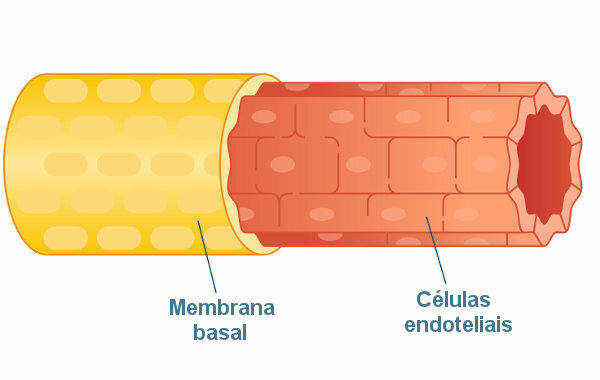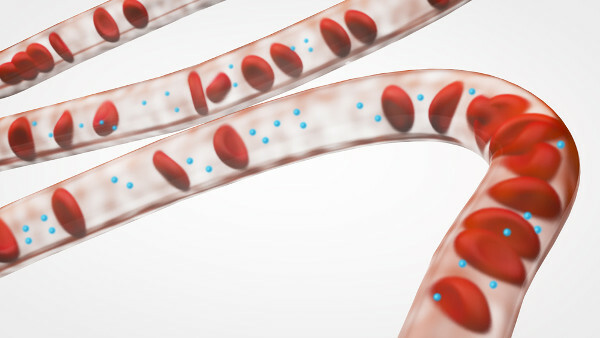capillaries they are blood vessels that present thin wall and small caliber. Added to the arteries and veins, they are part of the immense network of vessels that pass through our entire body, ensuring the circulation of the blood in the body. Next, we'll talk more about blood capillaries, their characteristics and functions.
Read more: What is hemorrhage? Definition and classification
Characteristics of blood capillaries
Blood capillaries are vessels formed by a layer of cells endothelial (endothelium), which are arranged to form a tube. Around this tube, we have the call basement membrane, which has molecular components produced by the endothelial cells themselves and which acts mainly to ensure the integrity of the capillary.
Around the capillary endothelial cells it is possible to observe special cells known as experts. These are able to differentiate and give rise to new blood vessels and connective tissue cells when damage occurs. It is also believed that they have some contractile function
, since the presence of the proteins actin and myosin, which are contractile protein filaments. This contraction can act regulating blood flow.
The capillary walls are slender, presenting, on average, one to three cells when observed in cross-section. The wall thickness is approximately 0.5 µm. in addition to this thin thickness, this blood vessel also stands out for its small diameter, which has approximately 7 µm to 9 µm. Although small, the diameter of the capillary is sufficient for the passage of Red Cells.
See too: Cardiovascular system - responsible for circulating blood throughout the body
Types of blood capillaries
Blood capillaries can be classified into three basic types by analyzing the continuity of the wall: continuous, fenestrated and sinusoids. Look at a table with the characteristics of each one of them:
blood capillaries | ||
Types of capillaries |
Features |
where are found |
continuous |
Continuous, uninterrupted endothelium. |
Present at connective tissues, muscular, nervous and in the glands exocrine. |
Fenestrated |
Continuous endothelium, however, with the presence of pores. The pores may or may not be covered by a thin membrane called a diaphragm. |
Present in organs such as the pancreas, kidneys, intestines, and endocrine glands. |
Sinusoids |
Endothelium is discontinuous, with an interval between cells. The basement membrane is also discontinuous. When compared to other capillaries, the sinusoid capillary has a larger diameter, a sinuous path and pores without a diaphragm. |
Present in bone marrow, liver and spleen. |
Importance of blood capillaries
Blood capillaries are vessels extremely important for the functioning of our organism, since they are the ones that allow the exchange of substances between the blood and adjacent tissues. It is through the capillaries, therefore, that the cells are able to receive oxygen and the nutrients necessary for its operation.

The exchange of substances through these blood vessels can occur between cells and also through them. In capillaries that have pores, the transfer of substances can also occur through them.
See too: Systemic and pulmonary circulation - definition and characteristics
Veins, arteries and capillaries
Veins, arteries and capillaries they are blood vessels that play distinct roles in the cardiovascular system.
Arteries are characterized by carrying blood from the heart to the different tissues of the body. The veins, in turn, carry blood from the tissues of the body to the heart. Capillaries, on the other hand, as we have seen throughout the text, are where the exchange of substances between blood and tissues takes place.
Analyzing the structure of these threeês types of blood vessels, you can also see some differences. While arteries and veins have three layers (tunics) different forming their walls, the capillaries have only a layer of endothelial cells.
In addition, in the veins it is possible to observe the presence of valves, which act to ensure that blood reflux does not occur. Valves are not seen in arteries and capillaries. If you are interested in the subject of this topic, read our text: Differences between vein, artery and capillary.
By Ma. Vanessa Sardinha dos Santos
Source: Brazil School - https://brasilescola.uol.com.br/biologia/capilares-sanguineos.htm
